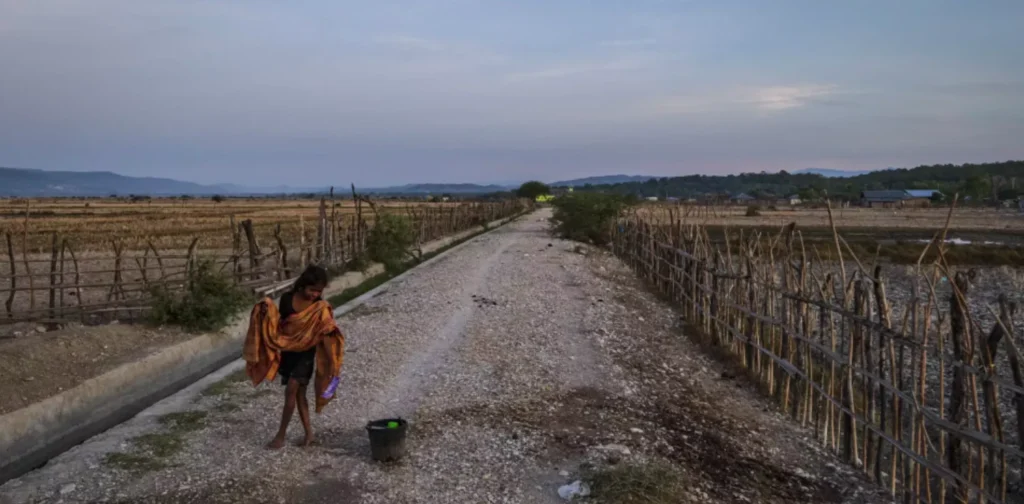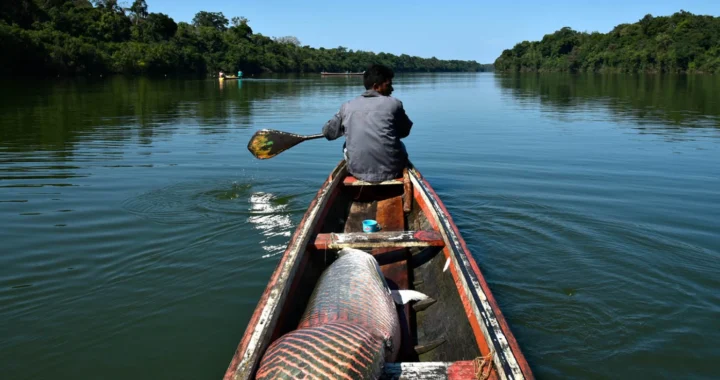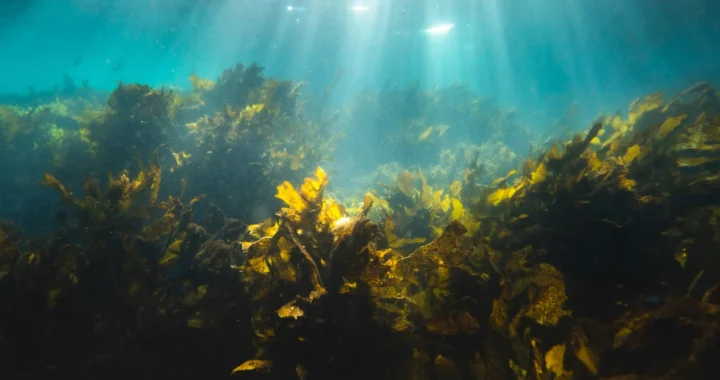How Climate Change Exacerbates Malnutrition in Indonesia

Photo: Ifansasti/UNICEF.
Sufficient and balanced nutrition is a fundamental part of life, especially for children. Unfortunately, the issue of malnutrition in Indonesia persists and is compounded by various factors. A report by UNICEF explores how climate change has exacerbated the issue and maps out priority intervention areas to address it.
Malnutrition in Indonesia
Malnutrition refers to deficiencies, excesses, or imbalances in one’s energy and/or nutrient intake. According to WHO, malnutrition includes three broad conditions:
- Undernutrition, including wasting (low weight for height), stunting (low height for age), and underweight (low weight for age).
- Overweight, obesity, and non-communicable diseases related to diet, such as heart disease, stroke, diabetes, and several types of cancer.
- Micronutrient-related malnutrition, including a lack of or too many important vitamins and minerals.
In Indonesia, over 4.5 million children under five years old suffer from stunting. There is roughly the same amount of children suffering from wasting, with over 460,000 of them experiencing severe wasting. Additionally, almost one million children under five, 1 in 5 school-age children (5-12 years), and 1 in 7 adolescents aged 13-18 years are overweight or obese. These issues prevent children from developing and reaching their physical and cognitive potential.
Inadequate diets and feeding practices as well as limited access to health services are key factors contributing to malnutrition in Indonesia. Poverty, inequality, low levels of education, lack of infrastructure, frequent natural disasters, and other environmental and climate-related factors also exacerbate the situation.
Climate Change’s Impacts on Malnutrition
A report by UNICEF and the Ministry of National Development Planning of Indonesia reveals a growing body of scientific evidence showing how climate change hinders progress in reducing child malnutrition in Indonesia.
The crisis and its impacts directly compromise the diversity, quantity, and quality of food available to children and their families. Additionally, climate change negatively impacts feeding and child-rearing practices and threatens the healthy environments necessary for accessing sufficient nutrition.
Furthermore, regarding food availability, rising temperatures associated with climate change can increase water demands for crops, accelerate the ripening process of fruits and seeds, reduce crop quality, and disrupt soil function and fertility. Climate-induced shocks, such as extreme heatwaves or floods, can reduce agricultural labor productivity, affect crop yields and production, and disrupt food supply chains, which in turn increase food prices and affect families’ ability to access food. Climate change also increases the frequency and severity of pest outbreaks, inflicting particularly devastating impacts on food crop systems and cash crops.
In addition to these direct impacts, climate change indirectly disrupts factors that support nutrition, threatens household and community livelihoods and incomes, and exacerbates socio-economic disparities.
Overall, the findings suggest that climate change is adversely affecting livelihoods in Indonesia in multiple ways. Communities that depend on agriculture and fisheries are particularly vulnerable to climate impacts and extreme weather events, which can reduce agricultural productivity, increase the risk of crop failure, and negatively impact fish stocks and fishing practices.
Priorities and Recommendations
The worsening climate change and the ongoing issue of malnutrition in Indonesia pose a growing threat to children’s wellbeing and their right to sufficient nutrition and healthy food. The threats are also aggravated by the fact that each region in Indonesia faces different climate change impacts due to their geographic characteristics, socio-economic conditions, and capacity to address and mitigate impacts. In this light, the report also provides a map of priority intervention areas and a simple risk index visualization that can help identify those areas.
The report concludes with a number of recommendations to prioritize the following interventions to address the impacts of climate change on nutrition in Indonesia:
- Respond: Ensure coverage and quality of essential services to prevent all forms of malnutrition and treat wasting in children before, during, and after the climate emergency.
- Adapt: Develop policies, plans, and strategies and implement nutrition programs that are adaptive to climate change.
- Mitigate: Redesign the food environment to support healthy, climate-friendly dietary behaviors and make sustainable, healthy diets widely available in communities, schools, and other places where children meet, learn, and play.
- Transform: Raise awareness on climate change, nutrition, and food poverty issues, as well as build the capacity of young people to become advocates for more sustainable and equitable food systems that support diets that benefit the people and planet.
- Measure: Prioritize the collection, analysis, and dissemination of quality child nutrition data to assess children’s access to diets, services, and practices that can prevent all forms of malnutrition. Additionally, it is crucial to assess how far child nutrition financing is responsive to climate change impacts and how climate financing contributes to addressing child malnutrition.
Translator: Kresentia Madina
The original version of this article is published in Indonesian at Green Network Asia – Indonesia.

Join Green Network Asia – An Ecosystem of Shared Value for Sustainable Development.
Learn, share, network, and get involved in our movement to create positive impact for people and the planet through our public education and multi-stakeholder advocacy on sustainability-related issues and sustainable development.
Become a Member Now

 Empowering Small-Scale Fish Farmers for Sustainable Aquaculture
Empowering Small-Scale Fish Farmers for Sustainable Aquaculture  Exploring Seaweed Farming for Climate Action and Community Resilience
Exploring Seaweed Farming for Climate Action and Community Resilience  Beyond Empty Promises: How Hong Kong Can Build Consumer Trust in Sustainability
Beyond Empty Promises: How Hong Kong Can Build Consumer Trust in Sustainability  Looking into Desalination to Tackle the Growing Water Crisis in MENA and Beyond
Looking into Desalination to Tackle the Growing Water Crisis in MENA and Beyond  Supporting Rewilding to Reverse Ecological Crisis
Supporting Rewilding to Reverse Ecological Crisis  Animating the Environment Through the Indigenous Language of Potawatomi
Animating the Environment Through the Indigenous Language of Potawatomi